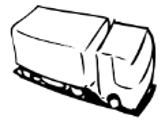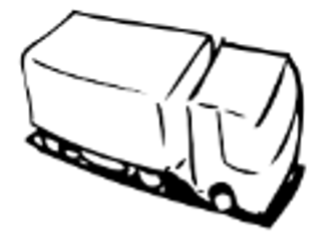Key Features
Osterwalder and Pigneur (2010) proposed nine key features of BMC and are explained below:
| Symbol | Components | Definition |
|---|---|---|
 |
Value Proposition | Product and service packages and the values given to consumer segments. |
 |
Customers Segments | A company’s target is to achieve, serve, and provide value for various groups of people or organisations. |
 |
Customer Relationships | Relationship types that a company may tailor to their consumer groups. |
 |
Channels | How a business connects with and reaches out to its consumers to offer value. |
 |
Key Resources | The most crucial resources for the business model to succeed. |
 |
Key Activities | The most critical steps a firm must take for its business strategy |
 |
Key Partners | A network of suppliers and partners supports the business concept. |
 |
Revenue Streams | A network of suppliers and partners supports a company model. |
 |
Cost Structure | Costs associated with operating a company model. |
Value Proposition

The Value Proposition is foundational to any business or product. It is the basic principle of value exchange between a company and its customers or clients. In general, a customer’s value is exchanged for money when the business solves their problem or relieves their pain. Questions to ask when defining business/product:
- What value do businesses deliver to their customers?
- What is the problem that the start-up is trying to solve?
- Why would someone need to solve this problem?
- What is the trigger for this problem?
Tips for Value Proposition
- Looking at consumer segments and determining where the product or service addresses the issue for customers, based on Maslow’s Hierarchy of Needs, is an intelligent method to tackle this for users or customers.
- If you offer your product or service to another company, you are an essential partner in helping them achieve their Value Proposition for their clients.
- It's critical to understand its goals for its customer segments and where business/product/service fits within the value chain.
Customer Segment

Customer segmentation is the process of dividing a customer base into groups of people who have common characteristics, such as age, gender, hobbies, and purchasing patterns. Questions to ask when determining Customer Segments are:
- Who are our team solving the problem for?
- For whom are the businesses creating value for?
- Who are the people that will value our value proposition?
- Are there other solutions or businesses?
- What are the characteristics of different solutions?
- Does our value proposition appeal to who?
- Does it appeal to white-collar workers or people aged 15 to 28, or infants?
- What are the characteristics of the people who are looking for the solution or value proposition?
HE teachers need to also consider the market size and the number of individuals in the Customer Segment. This will assist students in understanding the market from both a local and macro level. A great place to start understanding the customer is to create customer personas for each of their Customer Segments. They can read the guide to Persona Development.
Customer Relationship

Customer relationships are defined as how a business interacts with its customers e.g., events (one-to-many), third-party contractors, in-person (one-to-one), online, phone, and online. Questions to ask when determining Customer Relationship are:
- Do you meet with them in person?
- Or over the phone?
- Or is business predominantly run online so that the relationship will be online too?
- What type of relationship does each of our customer segments expect?
- How are they integrated with the rest of our business mode?
- How costly are they?
Creating a User Journey Map of consumers’ interactions with the company is a practical step. HE teachers can use this map to clarify the contact points between businesses and their consumers and the kinds of communication utilised to communicate with them. This will also aid in the definition of operations as a business and the identification of automation prospects.
Channels

Channels are defined as the avenues through which the customer meets the business and becomes part of the sales cycle. This is generally covered under the marketing plan for business. Questions to ask when determining different communication channels are:
- How will you tell your customer segment about the value proposition?
- Where are your customers?
- Are they driving a car and listening to the radio?
- Are they at an event or conference?
- Are they on social media?
- Do they watch TV shows?
- How are the channels integrated?
- Which channel is most effective and cost-efficient?
Understanding how to reach customers is so crucial to the business. Thus, HE teachers can make use of different channels and explain the concept of Channels within the BMC e.g., public speaking, guerrilla marketing, SEM (Search Engine Marketing), SEO (Search Engine Optimisation), blogs, social media, email marketing, networking, promotions, affiliates, unconventional pr, trade shows, community building, offline advertising etc.
Key activities

A business or product’s activities to achieve the value proposition for consumers are the Key Activities of a business or product. Questions to ask when determining different communication channels are:
HE teachers can make use of designing, consulting, web development as different key activities while explaining the BMC tool to students in a classroom session.
Key Resources

Key refers to the resources required by the business to do business. Questions to ask when determining different types of resources are:
- What practical resources are needed to achieve the key activities (actions) of the business?
- What key resources does your value proposition require?
- What resources are most important in distribution channels, customer relationships, and revenue stream?
HE teachers can use hosting, internet connection, people (staff), instruments (computers, oven etc.), places (office space, laboratories etc.), moveable property (bike, car etc.) as different key resources while explaining the BMC tool to students in a classroom session.
Key Partners

Are a list of external firms, suppliers/providers, and or other entities needed to complete key activities, and offer value to the consumers. These partners are key to achieve the value the business promises to the customer/consumers. Questions to ask when determining different types of resources are:
- Who are the key partners/suppliers/distributors?
- What are the motivations for the partnerships?
- Which key activities do each key partners perform?
- If the business cannot achieve their value proposition, who else does the management rely on?
HE teachers can make use of different examples related to key partners while explaining the BMC tool to students in a classroom session. For example, if a grocery store requires to sell food items such as bakery products, the business owner will make use of the local baker to supply fresh bread to the store. HE teachers can make use of similar examples to explain to students in more detail.
Cost Structure

These are businesses cost drivers. Business managers need to evaluate the costs of running their business according to their business model as determined by the key activities, resources, partners, and channels. Questions to ask when determining different types of resources are:
- How much does it cost to achieve business’s key activities?
- How does the cost structure affect the profitability margin of the business?
- How much does it cost to achieve the value proposition for customers?
- Are there additional costs to running a business e.g., insurance, etc.?
- What is the cost of my business?
- It is essential also to place a monetary value on time as a cost.
- How much would it cost you to hire you?
- What is the opportunity cost of running the business?
- What is the cost of my key resources and key partnerships?
HE teachers can make use of different examples related to cost structures while explaining the BMC tool to students in a classroom session. For example, firstly, HE teachers need to explain to the students whether the chosen business example is cost driven, or value driven? Thereafter, they can then define the related characteristics e.g., fixed costs (salaries, rents, utilities), variable costs, and or economies of scale. HE teachers can make use of similar examples to explain to students in more detail.
Revenue Streams
Revenue streams are the methods by which a business converts its value proposition or solutions to a customer’s problem into the monetary benefit. It is crucial to understand how to price a business based on pain of buying in exchange for solving the customer’s problem. Questions to ask when determining different types of resources are:
- For what value are our customers really willing to pay?
- For what do they currently pay?
- How are they currently paying?
- How would they prefer to pay?
- How much does each revenue stream contribute to overall revenues of the business?
HE teachers can make use of different examples related to revenue streams e.g. firstly, HE teachers need to explain to the students whether the chosen business example is focused on fixed pricing (i.e., list price, product feature dependent, customer segment dependent, or volume dependent) or dynamic pricing (i.e., negotiation, bargaining, yield management, or real-time market) strategy or both strategies? HE teachers can make use of similar examples to explain to students in more detail.